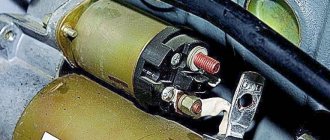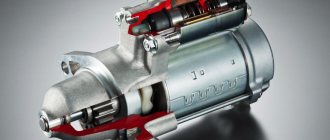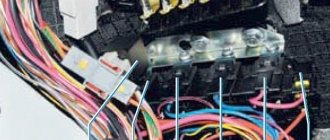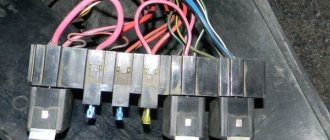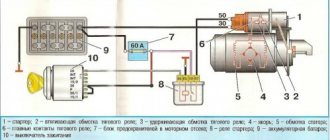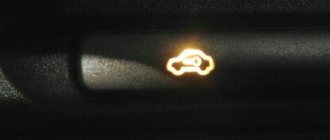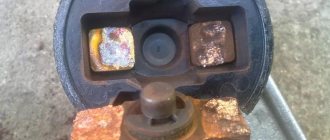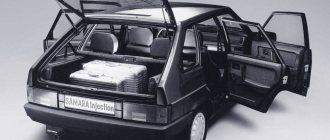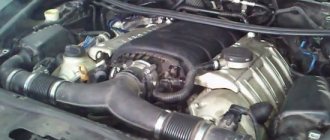The engines of Hyundai Solaris cars produced before 2022 are very similar in design. The reason for the inability to start the engine may be the failure of three different sensors, as well as disruptions in the electrical network and a breakdown of the canister purge valve. How to check all these elements is discussed further. We mean that the crankshaft rotates, that is, that the starter turns, and the Solaris may not start for one of six reasons. They are all listed below.
The video gives an example of how to start a car at -30.
Solaris does not start the first time reasons
Every owner of a Hyundai Solaris has encountered a situation where the car stops starting. There can be many reasons for this phenomenon, and this article will look at possible problems and also tell you how to solve them.
A little about the car
Hyundai Solaris is considered a budget car, the operation of which is possible in Russia. The vehicle manufacturer took care of this, adapting the design and equipment of the vehicle to the rather harsh conditions of our country. Since 2011, the production of two modifications of Hyundai Solaris began:
Among the advantages of this model are simplicity and reliability, which was noted by many Hyundai owners. However, despite the positive assessment of the majority of car enthusiasts, the car can completely suddenly let the driver down. The problem will arise if the car stalls while driving, or the car stops starting altogether.
Also, many car enthusiasts noted problems with the engine after starting the vehicle. What could be the reasons for possible breakdowns and how can they be dealt with?
What to do if the starter does not turn
The first reason for a possible breakdown may be that the starter does not turn. This situation is provided for in the vehicle operating manual. The document states what the cause of the malfunction may be, and also provides step-by-step instructions on how to fix the problem.
One of the most common reasons for the inability to start the engine is slow rotation of the crankshaft. This is especially true for cars using an automatic transmission. In this case, the gear shift lever should be moved to neutral. The car may not start the first time, and the action will have to be repeated.
Another reason could be that the battery is low. Most drivers miss this point, getting used to the flawless operation of the car.
In addition, very often this problem occurs in cold weather. There are several ways to determine whether there is enough charge to start the engine:
- First, you should check the battery terminals.
- Then it is recommended to inspect the wires connected to the starter. They should not show any damage in the form of signs of tearing. The connection point should also be tight.
- If both points above do not arouse any suspicion, you should turn on the light in the car. If the lighting is dim, the battery charge is low.
To prevent the car from stalling during the next attempt to start it or while the vehicle is moving on the road, it is recommended to recharge the battery. Otherwise, the starter clicks until it finally stops working.
Also among the reasons for the impossibility of starting the engine in this situation are:
- immobilizer malfunction;
- faulty starter;
- possible short circuit of the windings;
- system blocking;
- faulty wires at the point of contact with the ignition switch.
The last listed points relate to complex cases, so to solve such a problem you should visit a car dealership, where specialists will correct the defects that have arisen.
The starter turns, but the engine does not start
Another standard situation is when the crankshaft turns, but the car does not start. Here you should perform the following sequence of actions:
- Check the gasoline level.
- Assess the condition of electrical circuits and wires.
- Conduct coil diagnostics.
Finally, you should make one more attempt to start the engine. Often the problem lies in the breakdown of the spark plugs. There is no need to check the coils, since the car has enough of them, and a simultaneous breakdown of all coils at once is practically excluded.
Thus, when checking candles, you can consider two possible cases and their solutions.
Condition of spark plugs Problem solving
| Candles are wet | This means that the fuel line is fine. Then the usual replacement of spark plugs is performed. |
| Dry candles | This indicates a faulty fuel line, which is pretty bad. Regularly replacing spark plugs will not help, so it is recommended to replace the entire fuel filter and also check the cleanliness of the air filter. |
Basically, such actions can solve the problem and start the Hyundai Solaris engine. However, if all else fails, it is recommended to seek help from qualified professionals.
Replacing the sensor and thermometer
Sometimes it happens that the engine does not start due to sensor failure. Usually, to urgently fix a breakdown, you can use the advice of changing the places of two devices, if both are working.
However, if there is a breakdown in any of the sensors, you will not be able to start the car. Among the reasons causing the device to malfunction are:
- Penetration of air into the gaps between the elements and the fitting.
- Dirt getting into the pipeline.
- Failure of one of the existing sensors.
- Deformation or rupture of wires, leading to failure of the entire system.
Diagnosis and troubleshooting in situations where the starter turns the engine
The standard Hyundai Solaris operating manual contains step-by-step instructions that provide a complete algorithm of actions for all possible types of malfunctions.
Let's start with the most common: the crankshaft rotates slowly or the starter does not turn the engine. These symptoms are typical for Hyundai Solaris with automatic transmission. Most often, simple steps will help: you need to move the gear lever to neutral or park. You may have to repeat the move several times - this usually resolves the problem.
One of the common reasons for the inability to start the engine is the complete or partial, to a critical level, discharge of the battery. Having become accustomed to the flawless and flawless operation of the vehicle, many drivers forget about this. How to determine whether the battery charge level is sufficient to start the engine?
- First of all, you need to check the battery terminals.
- Next, visually inspect the wires going to the starter: they should not have any signs of breakage and should be firmly connected to the terminals.
- If there are no comments on two points, then turning on the light in the cabin will allow you to determine whether the battery needs charging. Dim lighting or turning off of the lights when you try to start the engine indicates a low battery.
- You need to charge the battery or try to “light” the car from another vehicle.
If these steps do not solve the problem, you should pay attention to the immobilizer.
An immobilizer is a security device that allows you to identify the owner and start the car only if the digital code in the key chip completely matches the data of the device itself. When the lamp lights up, the immobilizer signals that it does not see the key.
There are several options for troubleshooting on site:
- Make several attempts to remove and insert the key - usually this method takes at least half an hour and gives a 100% guarantee of a positive outcome and starting the engine.
- You can try to gain access to the engine using a duplicate key or its exact copy (usually included in the kit). If the engine was able to start the first time, then the reason is a faulty permanent key.
- The immobilizer antenna may be faulty - it has failed due to wear or oxidation of the contacts. In this case, the signal that the key is genuine simply does not reach the ECU. Therefore, there are not many options - move the ignition switch or use WD-40 liquid to clean the contacts.
If none of these actions help, you need to call a tow truck and transport the Hyundai Solaris to a specialized center for diagnostics. For owners, this can result in unforeseen expenses: from replacing the immobilizer antenna or flashing it to purchasing a new computer or a special device - an immobilizer bypasser.
Additionally, the cause of the malfunction may be:
- Faulty starter;
- Worn starter (armature) brushes;
- Interturn short circuit of the windings or a break in the windings of the electric starter relay;
- Interturn short circuit in the electric starter windings;
- Blocking of the electric starter due to the installation of an abnormal alarm system;
- Malfunction of the ignition switch contact group;
- For vehicles equipped with an automatic transmission, the selector is defective or broken.
More on the topic: Replacing brake discs on a Hyundai Solaris
These defects and breakdowns are complex cases, and it will not be possible to deal with them on the spot - you need tools, a lift or an inspection hole. Therefore, the vehicle must be delivered to a specialized service center for diagnostics.
The standard user instructions suggest a series of sequential actions if the crankshaft turns, but the engine does not start.
- Checking the fuel level;
- Diagnostics of electrical circuits and terminal connections;
- Coil diagnostics;
- Checking the spark plugs;
- Checking the fuel line;
- Attempt to start the engine.
In fact, it’s worth starting with checking the spark plugs: the Hyundai Solaris has four ignition coils, so there’s no need to check them - the probability of simultaneous failure is negligible, and it’s possible to diagnose a breakdown at an earlier stage - it is expressed in the “triple” of the engine, burning indicator on the dashboard and dips when pressing the accelerator. Therefore it is necessary
- The candles are wet. This indicates that the fuel line is working properly, so we change the spark plugs.
- The candles are dry. In this case, the fuel pump may be faulty or not supplying the required pressure, or the fuel filter may be clogged. Replacing the fuel filter can solve the problem in most cases. You can also check the cleanliness of the air filter - perhaps the engine does not have enough air.
If all the emergency measures and manipulations taken did not help, and the engine still does not start, you can check the sensors and valves, replace the fuel pump, and check the wiring. Each procedure is quite time-consuming and requires special equipment and tools.
Hyundai Solaris won't start
Every owner of a Hyundai Solaris has encountered a situation where the car stops starting. There can be many reasons for this phenomenon, and this article will look at possible problems and also tell you how to solve them.
Replacement and repair of DPKV
Failure of the crankshaft position sensor also causes the vehicle to be unable to start. With the help of this element, the operation of the ignition and power systems is synchronized. If there is a failure, communication between the systems is interrupted, which prevents the engine from starting.
If the reason is the failure of this element, it is necessary to use computer diagnostic services. If serious problems are detected, the sensor must be replaced, and only experienced specialists can do this.
Catalytic converter valve not working
This valve is designed to provide ventilation in the system, and failure of the element leads to serious damage to the vehicle. As a result, if a malfunction occurs in the adsorber, the car engine will not be able to start.
Valve operation is checked using an error diagnostic system. If a problem is detected, specialist help is required.
Replacing coils and wires
Finally, the last reason for the engine failure to start on a Hyundai Solaris is defects in the wires and malfunction of the coils, which occurs least often. In this case, the check must be performed as follows:
- Remove the plastic cover;
- Pull the coil out of the valve where the spark plug is located;
- Connect it to the spare spark plug;
- For a few moments, lean both elements against ground and at the same time “click” the starter.
If a spark does not appear on the spark plug, it means that one of the coils is broken, since in the absence of malfunctions the spark plug begins to burn. You can also evaluate the performance of the coil visually by inspecting it for damage. A faulty part will be indicated by small spots on the body, as well as melting or broken insulation.
This is the main list of possible reasons why the Hyundai Solaris stops starting. Sometimes a few steps are enough to fix the problem. However, sometimes you need the help of real professionals who are able to perform not only high-quality diagnostics, but also replace parts, if necessary.
If it turns out that you cannot cope with the problem yourself, it is recommended to give up trying to solve it and call a tow truck, which will deliver the car to the nearest service station.
Source: https://zapchasti.expert/reshenie-problem/ne-zavoditsya/ne-zavoditsya-hyundai-solaris.html
Checking the starter's serviceability
To check the condition of the starter, it must be removed from the car and a series of actions must be carried out. Use a screwdriver to manually turn the drive gear. It will turn one way along with the shaft, in the opposite direction - on the shaft. If the gear is working properly, it turns freely, without effort.
To check the starter, you need to connect the plus of the battery to the top contact bolt of the traction relay with the ignition wires, and the minus to the starter housing. Use a screwdriver to bridge the control terminal of the traction relay with the contact bolt. On a working starter, the electric motor should turn on as a result of such manipulation.
Hyundai Solaris starter design
A car starter consists of the following main components:
- Electric motor.
- Starter housing.
- Drive mechanism.
- A retractor relay that turns on the starter.
How much does a Hyundai Solaris starter cost?
Catalog number of the original starter Hyundai Solaris 36100-2B614
.
The Bendix starter is numbered 36145-2B614
. The cost of a new original starter is 20,000 rubles. Analogues can be purchased at prices starting from 6,000 rubles. Additionally, if you want to save money, you can purchase a used part from a salvage unit.
Hyundai Solaris won't start: reasons, how to fix it
Among the advantages of this model are simplicity and reliability, which was noted by many Hyundai owners. However, despite the positive assessment of the majority of car enthusiasts, the car can completely suddenly let the driver down. The problem will arise if the car stalls while driving, or the car stops starting altogether.
Also, many car enthusiasts noted problems with the engine after starting the vehicle. What could be the reasons for possible breakdowns and how can they be dealt with?
Electrics
Another element that will affect engine starting is the control injector temperature sensor. Failure of this electronic element will cause a changed injection angle. To fix the breakdown, it is worth replacing the sensor.
As for Solaris gasoline engines, so for a diesel power unit, a malfunction of the engine control unit disrupts the operation of all systems. To fix the problem, you will have to connect to the motor and carry out repair and diagnostic operations.
Solaris Hyundai won't start reasons: let's look at it in detail
Sometimes car owners are faced with a situation where the Hyundai Solaris does not start, but the starter turns. The reasons for this behavior of the iron horse may be different.
Why Hyundai Solaris won't start: reasons
The situation can develop in different ways. Sometimes, after turning the key in the ignition, the engine does not start, but the fuel pump still works and the starter turns. Every time since the third Hyundai, it finally starts and works fine for several days, then the situation repeats itself. Sometimes the car completely stops starting, and the starter shows no signs of life.
There are several reasons why Hyundai car engines refuse to start. These include deviations in the car’s electrical system, and failures of various sensors; the adsorber purge valve can also fail. If you dig deeper, the cause of the malfunction may be the use of low-quality fuel. It's worth checking the battery and air filter. Diagnosis must be carried out immediately.
We climb into the engine
First of all, it is recommended to check the cooling system temperature sensor. It is because of incorrect data that the electronic engine control unit can disrupt the fuel supply and create a lean mixture.
The next place to look for a problem is the injectors. It is defective fuel injection that can lead to the engine being difficult to start not only when the engine is hot, but also when it is cold. To check the elements, you need to dismantle them from the car and then check them on a special stand.
It is also worth paying attention to the fact that there may be a rupture of the fuel regulator membrane. As a result, gasoline enters the intake manifold, which leads to an enrichment of the combustible mixture. In turn, an over-enriched mixture is difficult to ignite, and in most cases does not burn at all.
But, for an injection engine, these are not all the reasons. The most common reasons were discussed earlier, and now it is worth considering less common causes. Let's start with the fact that the check valve of the fuel pump may fail, which will pump fuel back and after turning off the engine there will be no gasoline in the system until it is restarted.
Also, meters and sensors can affect the repeated hot start of the motor. Thus, failure of the following meters may make it difficult to start the engine when hot:
- Crankshaft position sensor. Incorrect measurement of the crankshaft position will lead to the fact that the data received by the electronic engine control unit is not reliable, and accordingly the normal supply of fuel to the combustion chambers will be disrupted.
- Mass air flow sensor. If this meter fails, air can enter in large quantities, which leads to an incorrect air-fuel mixture ratio. In turn, this causes poor engine starting.
- Idle speed sensor. This meter is involved in the start-up and initial operation of the engine, and therefore its failure complicates not only the start-up of the power unit, but also its idling operation.
Poor engine starting or starting the second time
Greetings, Friends and guests of the site. In this article we will reveal the reasons for poor engine starting when cold or hot. And also if the engine starts only the second time.
This topic has come up constantly over the years. And the peak of activity occurs in the autumn.
At this time of year, the nights become cold and car owners begin to experience problems starting the engine in the morning.
There are several reasons for this phenomenon, and for myself personally, I divide them into three categories:
- Electrical
- Fuel
- Technical
Let's look at them in order and at the end I will give statistics on which of them occur most often.
So, let's go.
Reason #1. Fuel pump
Or rather, not only the fuel pump, but also the check valve in the fuel module. The fact is that for safety reasons, the ECU turns off the fuel pump after a couple of seconds if the engine does not rotate. This prevents fuel from leaking during an accident.
Therefore, if the check valve does not work correctly or the pump itself has reduced performance, then it does not have enough time to pump up the necessary pressure to start the engine. And you have to turn on the ignition several times and give the pump more time. Usually the second time the engine starts. Moreover, the colder it is, the more clearly this problem manifests itself, since in warm weather less fuel is required to start and the fuel itself evaporates more easily from the valves, thereby making it easier to start the engine.
Hyundai Solaris won't start: reasons, how to fix it - AutoExpert
14.01.2020
Every owner of a Hyundai Solaris has encountered a situation where the car stops starting. There can be many reasons for this phenomenon, and this article will look at possible problems and also tell you how to solve them.
ATTENTION! A completely simple way to reduce fuel consumption has been found! Don't believe me? An auto mechanic with 15 years of experience also didn’t believe it until he tried it. And now he saves 35,000 rubles a year on gasoline! Read more"
Video “Installing a gear starter on a car with your own hands”
Detailed instructions for installing a gear-type mechanism with a description of all the features and nuances are given in the video below (the author of the video is the Buda Proekt channel).
The owner of any car, including the Hyundai Solaris, may encounter such a problem as a refusal to start the engine. Moreover, this process may be accompanied by constant “clicking” and cranking of the starter.
Below in this article we will examine in detail the causes of these problems, as well as ways to repair a non-functioning starter.
Hyundai Solaris won't start
There is probably not a single car owner who would avoid the situation when his car categorically refuses to start, despite all the efforts made. A similar problem can occur anywhere: when leaving a parking lot, on the highway, after a short stop at an intersection. It is also dangerous that when the Hyundai Solaris does not start, it can unwittingly cause an emergency.
Causes of the malfunction and ways to eliminate it
What to do if the engine won't start? The likelihood of encountering a problem among car owners who do not properly monitor the condition of the vehicle is much higher - this includes irregular technical inspections and checking the availability and quality of fluids in all automotive systems, which as a result significantly shortens the life of the vehicle components.
In addition, its functioning is also affected by weather conditions, because it is often difficult to start the engine in frost or extreme heat. It would also be a good idea to check the air filter, as the engine may simply not have enough air. It would be appropriate to inspect the battery, since when its charge is low, the starter clicks, but does not turn or engage.
Similar symptoms sometimes occur on cars with an automatic transmission, which is often eliminated by several movements of its lever.
The design of all Solaris engines is almost the same, which is why the reasons for the inability to start any of them include the failure of several sensors, power failures, and a malfunction of the canister purge valve. When the crankshaft rotates, which means that the starter turns, the car is unable to start for some reasons, the study of which will help in the future to avoid such troubles on the road.
Checking the presence of a spark on the spark plug
To do this, remove the plastic cover with the key set to the “LOCK” position, after which one of the coils is taken out and a spare spark plug is attached. After pressing its body against ground, you need to turn on the starter for a few seconds, and if a spark does not appear, this will suggest a wiring fault.
If there is still a spark, the insulation may be broken, which will require replacing the coil module. In addition, there may be no power to the ECU, resulting in none of the coils working, but such cases are extremely rare.
Rail pressure diagnostics
If it is impossible to start the car engine, it is necessary to relieve the pressure by turning off the ignition and then waiting for 3.5-4 hours, after which you should check the serviceability of the power system:
- The negative terminal is removed, and then the retaining nuts are unscrewed.
Next, it is necessary to secure a pressure gauge between the ramp and the hose, and the tightness of the connections must be maintained.
- The battery is connected, then the ignition is turned on. The pressure indicator must be at least 340 kPa.
If the value is low, you will need to find out the reason, which could be a clogged fuel filter, a broken pump, and perhaps even ice formation in the fuel line. A special feature of the Hyundai Solaris engine ramp is the absence of diagnostic valves on it.
Sensor inspection
It is necessary to check the thermometer and 2 sensors: DBP, DPKV. On the sensors, it is only possible to renew the connection, and if the DPKV malfunctions, the engine will never start.
There will be no difficulties with the thermometer, since it must be disconnected, and then another sensor must be connected to the plug, after which the engine will start.
Inspection of the canister valve
The process begins by disconnecting the battery, after which the supply pipe is removed, the connector is disconnected and the assembly is pulled out. When dismantling it, no air is allowed to pass through at all.
The valve is then reconnected to the plug and the battery is connected. If, when you try to start the car, the valve clicks and also allows air to pass from the thin pipe to the thick one, then the unit is working. If there are faults in it, it is impossible to start the engine.
In the current realities, there is another problem that is often the reason for the engine’s failure to start - low-quality fuel. Many Hyundai Solaris owners often encountered the fact that the spark plugs, when unscrewed, turned out to be wet and covered with soot. Cleaning them and then putting them back in place usually allowed the engine to start, but after a while the problem could recur. After adding high-quality gasoline, the car is transformed for the better, which only confirms that low-quality fuel directly affects the ability to start the car.
Source: https://osolarise.ru/remont/ne-zavoditsya-hyundai-solaris.html
Option one - battery
This is perhaps one of the most common types of malfunctions of this kind. Its essence lies simply in a discharged or inoperative battery. Determining discharged is simple:
- if the solenoid relay clicks, but the starter does not turn, and the lights on the dashboard go out, the culprit is the battery;
- when a series of clicks occurs, and the lamps also noticeably dim, then, as in the previous case, the battery is to blame;
- if nothing happens at all, then the battery may also be discharged - you need to check it with other loads (for example, turn on the headlights).
If the cause is the battery, then it would seem that everything is simple - just charge it (or light it) and you can hit the road. But not everything is so simple, because the unclear reason that caused the consequence in the form of an unsuccessful launch will cause the same consequence again. Therefore, it is worth figuring out why the battery was discharged.
Everything is elementary if a light was simply left on somewhere, or another consumer was left on. But if everything was turned off, then it is necessary to check the quality of the generator, as well as the serviceability of the battery itself.
Switching
Switching the starter is simple - the plus of the battery is screwed to the solenoid relay, the minus is on the housing, and a small cross-section wire from a typical relay, which is controlled by the ignition switch, is suitable for starting.
If, when you turn on the ignition, the relay clicks, but the starter does not turn (and the solenoid relay also does not work), then the reason may be in the relay itself or the control cable. You can accurately install it in a fairly simple way - you need to supply “+” power to the starter control terminal (where the cable of the smallest cross-section is connected, shown with an arrow in the photo).
If the starter starts to “turn”, then the reason is in the wiring, relay or ignition switch.
Note. Before checking, you must make sure that the car's gearbox is in neutral, otherwise the car may start moving.
By the way, if the trip is urgent, then you can start the engine this way. You just need to turn on the ignition and manually (by applying positive power to the control terminal) start the engine.
Bad contacts
If the starter clicks but does not turn and, at the same time, extraneous sounds occur (as an option, it sometimes clicks, sometimes it does not click) - you need to check all connections, especially the power cable.
The point here is that when starting the engine, the starter consumes quite a lot from the battery - about 200 amperes. If the contact is insufficient somewhere, then out of the required 200 it can “get” only 10, which is enough for the solenoid relay to operate, but not enough to start. In the same case, a series of “clicks” may occur.
It is necessary to check all connections (including battery terminals), clean the contact pads from oxides, lubricate them with special lubricant and tighten to the recommended torque.
